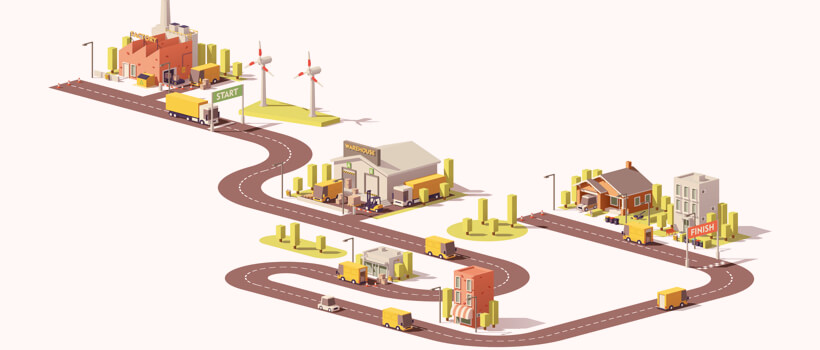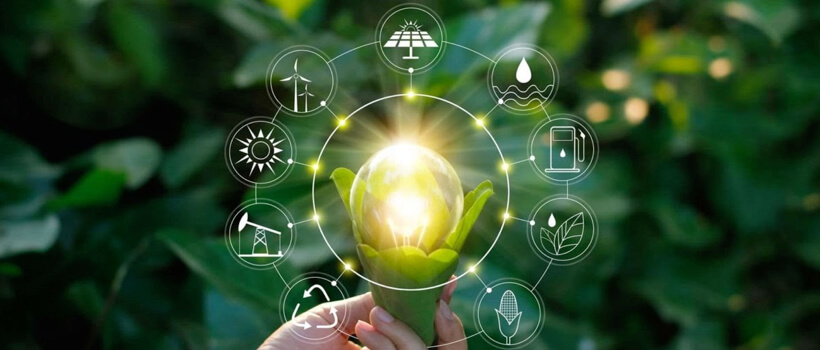 1-800-805-5783
1-800-805-5783 
Table of contents
The adoption of digital technology has been significant in the energy sector in the past decade. Digital technology is not just a buzzword anymore, it has become a crucial part of this revolution. Post COVID-19, the energy sector has awakened more to the use of technology as the traditional way of doing business was disrupted and adaptability for innovation was the only solution. Automation, predictive analytics, machine learning, and cloud computing have found their way into the infrastructure of energy productions and operations. Energy 4.0 is the next shift and the more we know about it, the better we are prepared for the future. Let us find out the major technologies in this sector and how the key players of the market are leveraging these changes for competitive advantage:
Automation in the energy industry is still growing and is yet to unlock its full potential. As per the report from Capgemini, Intelligent Automation in Energy and Utilities: The next digital wave,a survey of around 530 business organizations in this sector was done and it was found that many such organizations are already implementing or experimenting with intelligent automation systems. Though much of the automation technology in this area is more targeted towards physical processes, non-core physical processes have more potential. For instance, redundant work of data entry and analyzing system trends can be fully automated giving more efficiency, better economic benefits, and improving employee experience. In many countries, utility companies use automation for a meter reading of energy consumption before billing the customer; this causes less scope of error and reduces time. Exeleon electricity and gas utility, a company based in the United States, uses RPA to resolve customer complaints and gain more insights on specific issues.
Blockchain promises a transparent and secure system for business transactions, especially when used along with smart contracts. This characteristic has been leveraged as a boon by the business leaders in the energy sector. Many companies have enabled blockchain technology for wholesale electricity distribution connecting end-users of the grid. The concept of a peer-to-peer market has also emerged using this technology where people on the network can trade excess energy with other individuals. This system facilitates the decentralization of energy and creates a stable market with lower costs.
Power Ledger, an Australian company, has used blockchain to create and implement the concept of ‘Microgrids’. These are a cluster of interconnected loads with distributed energy resources. As of now, they exist on top of the national grid but can be self-sustaining. Blockchain can provide better efficiency and control over energy usage. It can be further used to record and analyze data for better predictions of market prices, fuel costs, and energy law compliances.

The biggest application of drones has been seen in the renewable energy sector. Drones along with Artificial Intelligence, are able to track and monitor data like never before. Because of their ability to capture thermal and infrared images, they are highly utilized in the inspection of wind turbines and solar panels in the wind and solar farms respectively. Their efficiency to optimize the fitting of solar panels on a piece of land and overlay blocks of it is much more than the traditional methods. In the latest developments, drones are also used to de-ice wind turbines in cold climates by spraying liquid through a nozzle over the blades.
The data documented by drones is highly useful and can be used for analysis to detect patterns during weather shifts and landscape monitoring. Since AI is used to determine a pre-defined for drones to travel, the data collected can be enhanced using AI tools to increase accuracy and reduce costs.
Production of energy and its deliverance has become more sustainable after the introduction of IoT in this sector. The IoT-enabled devices, sensors, actuators, and analytic tools give operational insights into the maintenance of equipment and help the management of assets in a dynamic fashion. The best application of the Internet of Things in industrial management is the remote monitoring of equipment that functions on predictive maintenance that can send information on detecting an imminent error and can provide protection against damages and stoppages.
IoT has brought the decentralization of the grid as a reality. The smart grid technology based on the Internet of Things aids in the detection of minute changes in electricity supply and demand. Placement of sensors on substations and along the distribution lines help provide real-time power consumption data that is useful in making decisions regarding networking, voltage fluctuations, and control, load switching, etc. IoT not only helps in benefitting from a more distributed grid system but also improves grid management.
As the population is rising, the demand for energy is ever-increasing. The movement from non-renewable to renewable resources was inevitable. Digital technologies are helping the world’s energy organizations to move to a safer, sustainable, and more efficient future of energy. The continuous depletion of fossil fuels and the growing prices associated with the traditional resources is a wake-up call that the conventional methods of manufacturing and operations in this industry have become redundant and obsolete. The transition to innovation in the use of renewable resources and the adoption of digital technologies to enhance this process of transition is the new step in the ladder of moving to a better and more sustainable world.